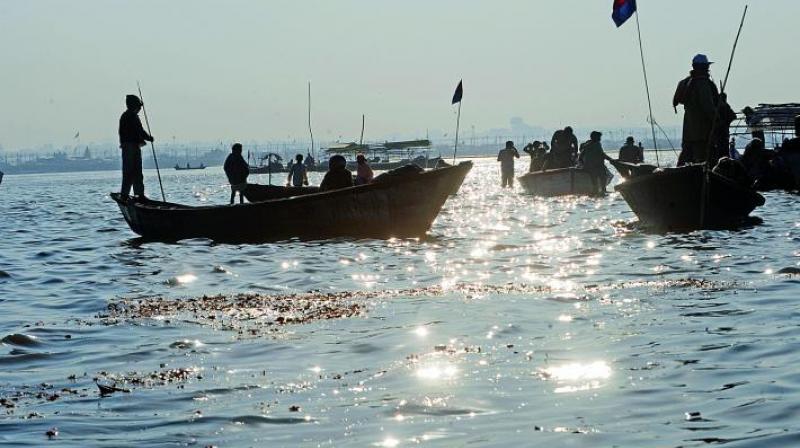So, let's talk green: The human beings in Ganga and Yamuna

“O Mother! ... Necklace adorning the worlds! Banner rising to heaven! I ask that I may leave of this body on your banks, Drinking your water, rolling in your waves, Remembering your name, bestowing my gaze upon you'' is the fervent Gangashtakam prayer you hear from the faithful expressing their wish to be cremated along the holy river Ganga when their time comes to move away from this world.
The Ganga, is a trans-boundary river which flows through the India and Bangladesh. The 2,525 km river rises in the western Himalayas in the Indian state of Uttarakhand, and flows south and east through the Gangetic Plain of North India into Bangladesh, where it empties into the Bay of Bengal. It is the third largest river in the world by discharge. 1.5 billion liters of untreated sewage enter the river each day, along with 500 million liters of industrial waste, making the Ganga the fifth most polluted river of the world. Pollution threatens not only humans, but also more than 140 fish species, 90 amphibian species and the endangered Ganges river dolphin. The levels of fecal coliform from human waste in the waters of the river near Varanasi are more than 100 times the Indian government's official limit.
The Yamuna river is the longest and the second largest tributary of river Ganga. Originating from the Yamunotri Glacier at a height of 6,387 metres on the South Western slopes of Banderpooch peaks in the uppermost region of the Lower Himalayas in Uttarakhand, it travels a total length of 1,376 kilometres and has a drainage system of 366,223 square kilometres, 40.2% of the entire Ganges Basin, before merging with the Ganges at Triveni Sangam, Allahabad, the site for the Kumbha Mela every twelve years. It is the longest river in India which does not directly flow to the sea. In 1909 the waters of the Yamuna were distinguishable as "clear blue", as compared to the silt-laden yellow of the Ganges. However, due to high density population growth and rapid industrialisation today Yamuna is one of the most polluted rivers in the world, especially around New Delhi, which dumps about 58% of its waste into the river.
In all the bad news about the pollution levels of these two holy rivers, comes a sliver of hope. In a landmark judgement, a court in Uttarakhand has ordered that the Ganges and the Yamuna rivers be granted the same legal rights as humans. That is to say, the rivers must be granted status as living human entities. What this means is that, polluting or damaging the rivers will be illegal. While there is still some ambiguity on how this will eventually play out, this order from the court is being hailed as an enlightened move.
The Constitution of India has environmental protection stated through many articles including article 14, 19 (1)(g), 21, 48A, 51, 51A. All these in summary state that, It is fundamental human right to live in an unpolluted environment and it is fundamental duty of every individual to maintain purity of environment. Looking at the Ganga and the Yamuna, obviously none of these constitutional provisions have been respected. Since human beings have more protection that is actually respected, the move by the courts to declare the Yamuna and the ganga as human beings is a smart move.
Judges Rajeev Sharma and Alok Singh said the Ganges and Yamuna rivers and their tributaries would be 'legal and living entities having the status of a legal person with all corresponding rights, duties and liabilities'. The court in the Himalayan resort town of Nainital appointed three officials to act as legal custodians responsible for conserving and protecting the rivers and their tributaries. It ordered that a management board be established within 3 months.
Most certainly the heavenly Gods will be pleased that we are at last planning to show some respect to these two holy rivers. The test is on.

